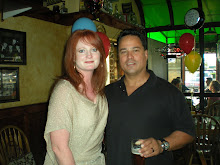Journal #2 “Museums in the Classroom” by Rose Reissman
Reissman, R. (2009 February). Museums in the Classroom. Learning and Leading with Technology, 4, Retrieved February 15, 2009, from http://www.learningandleading-digital.com/learning_leading/200902/
This was a very interactive article with some great links to cybermuseum resources. It mentioned the benefits of a virtual field trip to a museum are student-centered, investigative and offer collaborative learning. A teacher can incorporate a virtual field trip as a literacy and content tool in instruction. Some examples given were a cybermuseum visit to the American Red Cross to enhance lessons on community service and volunteerism, or a visit to the National Cryptologic Museum to augment math literacy and puzzle solving skills. The teacher can use these virtual field trips to add excitement to the classroom by appointing a docent “tour guide”, printing admission tickets, or having visitors sign a guest book.
I actually had fun surfing the cybermuseum sites. I followed one all the way to the Mayflower and ended up looking up my ancestors.
1. What benefits would a teacher enjoy by incorporating a virtual field trip into their lesson plan?
The benefits for the teacher are the creative aspect that they can add into a lesson by using the virtual field trip. They can foster a child’s curiosity and exposure to safe websites. They can involve parents and the community by sending home newsletters with updates on cybermuseum trips and pictures of their child acting as the docent in the classroom, “selling” admission tickets, or exploring multicultural aspects of the experience.
2. How can a teacher interrelate digital citizenship and virtual field trips?
The elements of digital citizenship that relate to the virtual field trips are: digital access, digital literacy, digital etiquette, and digital security. Teachers can also promote Internet safety by using awareness, guided practice, modeling and demonstration, and feedback and analysis.
Friday, February 6, 2009
Subscribe to:
Post Comments (Atom)




No comments:
Post a Comment